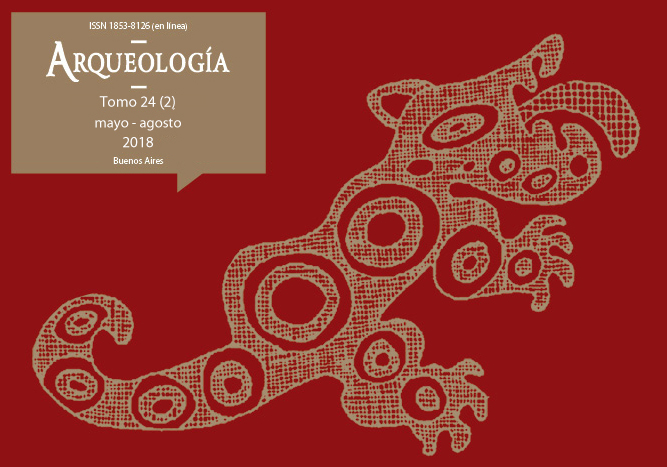Archeology and History at Aldea Beleiro (Southweast of Chubut): Old and new inhabitants of Casa de Piedra de Roselló Cave and its environs
Keywords:
Patagonia, Peopling, Archeology, Cultural contact
Abstract
Since 2010, archaeological research has been carried out at Aldea Beleiro, Southwestern Chubut, aimed at recovering the history of the peopling of the province from its origins to the arrival of immigrants during the 19th Century, leading to the subsequent emergence of a creole population. Using archaeology, including material culture as well as historical documents and interviews, allied to a regional approach, we seek to rebuild the history of the area. In this sense, a major focus of this research is the interaction between different social groups and daily life spent in their areas of habitation. To this effect, this paper will present the results of research carried out at the Casa de Piedra de Roselló Cave, and of surveys undertaken at indigenous family settlements for the historical period at Aldea Beleiro. These demonstrate a continuous occupation of the region since at least, 9,000 years ago.Downloads
Download data is not yet available.
How to Cite
Castro Esnal, A., & Casanueva, M. L. (1). Archeology and History at Aldea Beleiro (Southweast of Chubut): Old and new inhabitants of Casa de Piedra de Roselló Cave and its environs. Arqueología, 24(2), 247-257. https://doi.org/10.34096/arqueologia.t24.n2.5008
Section
Reports
Authors who publish in this journal agree to the following conditions:
- Authors retain copyright and yield to the journal right of first publication with the work registered with attribution license Creative Commons, which allows third parties to use the published always mentioning the authorship of the work and first publication in this magazine.
- Authors can make other independent and additional contractual arrangements for the non-exclusive distribution of the version of the article published in this issue (p. Eg., Inclusion in an institutional repository or publish it in a book), provided that clearly indicate that the work was published for the first time in this magazine.
- It allows and encourages the author / s to publish their work online (eg institutional or personal pages) before and during the process of revision and publication, as it can lead to productive exchanges and greater and more rapid dissemination of work published (See The Effect of Open Access).





(1)13.png)






1.jpg)
1.jpg)


13.png)
1.png)


(1)1.png)









